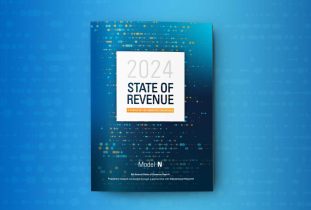At the recent Life Sciences Pricing and Contracting Conference in Washington, D.C., state price transparency emerged as a hot-button topic. The burden of maintaining compliance for pharmaceutical companies keeps getting heavier as states pass new regulations and updates to existing ones. More than 20 states have already passed transparency laws, and more do so every month. Pharmaceutical companies are becoming increasingly aware that current processes may not withstand the accelerated trajectory of incoming regulations, as each additional law comes with a new set of regulations with different deadlines and forms that they will need to comply with.
The costs of non-compliance with these and other regulations can be quite prohibitive, with penalties ranging from $1,000 to $30,000, while others charge fees that can go from $200 to $20,000 per violation per day. Penalties for non-compliance with the new Virginia law HB2007 can cost up to $2,500 per day from the date on which such reporting is due.
The manual process state price transparency management (SPTM) process may seem manageable today, but as your product mix grows and diversifies, combined with new regulations across the United States, managing this process will only continue to increase in complexity, making it more difficult to manage without automation and dedicated expertise.
What’s involved in staying compliant?
Pharmaceutical pricing transparency laws vary considerably by state, but states generally use one of three parameters to trigger a pricing reporting requirement.
- Significant increases in a WAC over a relatively short period of time. States generally require specified disclosures when a drug with a WAC of, say, $200 shoots up by 10% or more in 12 months. But the WAC threshold, the percentage increase, and the timeframe all vary depending on each state’s particular law.
- WACs for new drugs that exceed the Medicare Part D Specialty Drug Rate, which is currently $830 in CY 2023.
- Specific drugs targeted by a state. Many states publish lists of particular drugs for which manufacturers must disclose detailed data within certain timeframes or by specified deadlines. Again, the named drugs, the disclosures required, and the timeframes or deadlines vary from one state to another.
Compliance with these laws can create a significant administrative burden, as pharma companies need to track and report on a large amount of detailed information.
Here’s what is required by this increasingly varied body of laws:
- Vigilant tracking of decentralized passing and updating of legislation: The pace and uncertainty of new laws or updates to existing ones make knowing the extent of compliance responsibilities a difficult moving target.
- Transforming new or updated laws into repeatable – and scalable – templates and processes: Some states offer downloadable reporting templates. Others have more sophisticated online portals requiring manufacturers to register, meet specific data format standards, and comply with rigid deadlines. Still, others have not implemented anything to aid pharma companies, either because of a lack of funding, administrative delays, or the legal ambiguity of laws. Pharma companies must set up internal processes that can cope with this broad range of required compliance operations.
- Meticulous data collection and reporting: These laws require manufacturers to provide extremely detailed data, which can be time-consuming and costly to collect. Additionally, some of the required information may be trade secrets or otherwise proprietary data, leading to concerns about privacy, confidentiality, and losing competitive advantage.
What to look for in a pricing compliance solution
Ideally, pharma companies should look for a partner that can provide a mix of software to support a more automated approach and expert services that continue to monitor and adapt processes as regulations change. While this is the most effective way to prepare yourself for any SPTM-related changes and maintain a penalty-free status and good reputation, some companies might not be ready to make such a massive shift and may want to start with the software option.
Although a handful of software solutions exist, they are generally part of larger revenue management platforms. In fact, most such platforms do not possess automated pricing compliance capabilities. So, you must choose your vendor carefully.
Here is what an ideal automated solution should be able to do:
- Track regulatory changes: A leading compliance software solution should continuously monitor and update changes in pricing regulations across all U.S. states and territories. This ensures that pharmaceutical companies are always aware of the latest rules and can adjust their pricing compliance strategies accordingly.
- Automate calculations: It should also automatically calculate prices and changes of prices according to the required regulatory formulas. For example, it should automatically calculate the average manufacturer price (AMP), best price (BP), and the federal upper limit (FUL) as required by U.S. Medicaid regulations. This automation eliminates the human errors that can cause non-compliance.
- Offer audit trails: This means that the software is capable of automatically documenting all changes to pricing data and calculations. This is critical in the case of an audit by regulatory authorities.
- Streamline reporting: The software should also automatically generate regulatory reports. For example, it should be able to create quarterly and monthly Medicaid drug rebate program (MDRP) reports, pricing reports for the Public Health Service (PHS), and other required reports. This saves time and ensures that reports are accurate and submitted on time.
- Validate and verify data: The software validates and verifies pricing data and calculations to ensure accuracy. It can flag potential errors or inconsistencies before they become compliance issues.
- Flag and send alerts for pending deadlines and any other compliance issues: The software should be able to send alerts when a deadline is imminent or potential compliance issues are detected. For example, it might alert users if a proposed price would violate Medicaid’s “best price” rules.
Choose a path of financial prudence and ROI
Attempting to stay on top of legislation across all U.S. states and territories would require at least one full-time professional. Then there’s the legal task of interpreting those laws as they were intended. Seemingly minor details – what did the state legislature mean when it said reports were due within 45 days of a pricing change? Does that mean Day 44 at midnight? The laws also have to be embedded in software and processes. Slipups can be costly indeed. Indeed, avoiding even one state’s penalty could deliver positive ROI from investing in a leading pharma pricing transparency solution.
By automating the compliance process, pricing transparency software can help pharma companies avoid costly mistakes, reduce the risk of regulatory penalties, and focus more of their time and energy on developing and marketing their productshttps://www.modeln.com/products/state-price-transparency-management/.
Discover how Model N can support your state price transparency programs today.
















